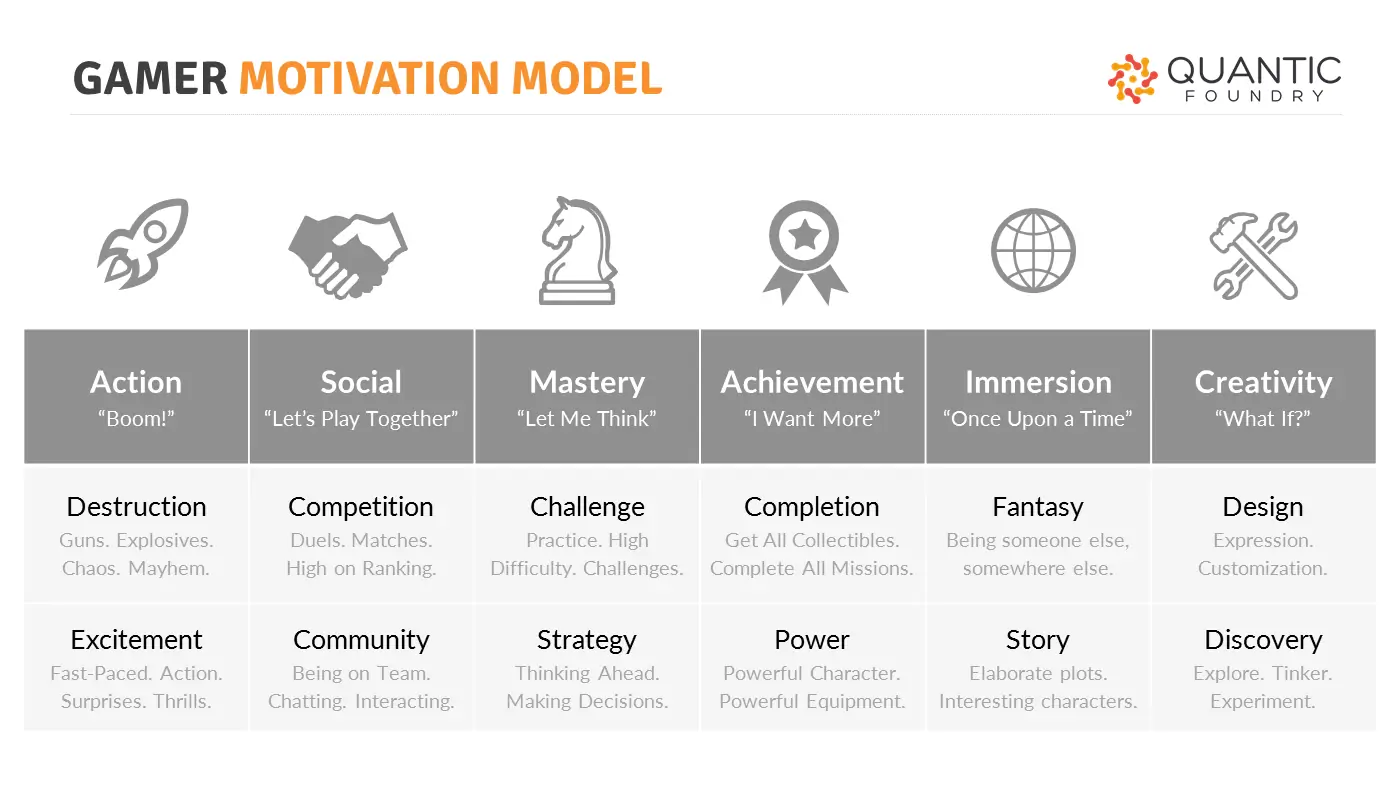How to build an engaging game using motivators
- Understand what is a motivator and why they are important
- The different types of motivators
- An exercise on how you can apply motivators to your game
At Immutable we work with a range of games to maximize their success. Motivators tap into the reasons that players want to play games and developers can leverage them to ensure their game features are aligned with their audience. By understanding player motivations, you can design a better player experience, which improves the overall engagement and retention for your game.
In this video, join Patrick, our Game Director, as he explores Quantic Foundry's research on motivators and shows how you can apply them to your own game.
Video summary
What is a motivator
- Motivator comes from Latin and means something that stimulates towards action
- The various triggers (features) that players will experience to make them want to start and continue playing the game
- Motivators fuel the player's Motivations so the two terms will be mostly interchangeable
Why are motivators important
- Engagement: your players will contribute to the game's reputation, community and activities. They will share a positive message amongst their friends/peers.
- Retention: your players will be keen to come back to the game to continue their progression and will naturally do so given their motivations.
- Spend: As a consequence of engagement and retention, your players are more likely to become Paying Users.
The types of motivators
- There are 6 types of motivators, and each type has 2 subtypes.

Source: Quantic Foundry
Motivators Map

Source: Quantic Foundry
Motivators are linked and do not exist in a vacuum meaning that players tap into more than one motivation. The motivators map is a visual representation of how scores for certain motivator types are correlated. For example, players that score high on competition also tend to score high on excitement.
There are three clusters of motivators - these are highly correlated connections between motivators. Leaning into these natural connections can help with designing an immersive experience.
- Action-Social (Orange) - Fasted paced gameplay with player interaction like FPS or moba games.
- Mastery-Achievement (Blue) - Combines strategy games with challenges and building skill level.
- Immersion-Discovery (Yellow) - Combines world building with narrative driven games.
Bridges can be used as a way to impact players that are slightly outside the main motivator. These are the motivators in between each cluster in the map.
- Discovery is a bridge between Immersion-Creativity and Mastery-Achievement
- Power is a bridge between Action-Social and Mastery-Achievement
How you can apply motivators to your game
Here's an exercise we run with our partners at the start of their game building process:
- Select your top 3 motivators
- Select 2 minor motivators
- Define them in one sentence and why your players would benefit from following those.
- Every feature or major decision you make in the game should relate to those motivators.
- This helps keep coherence in both design and communication of features.
Resources